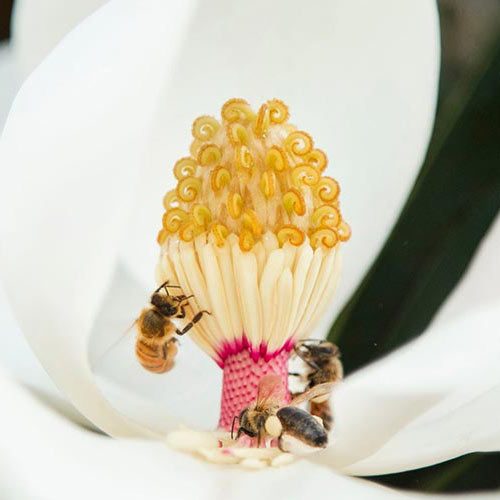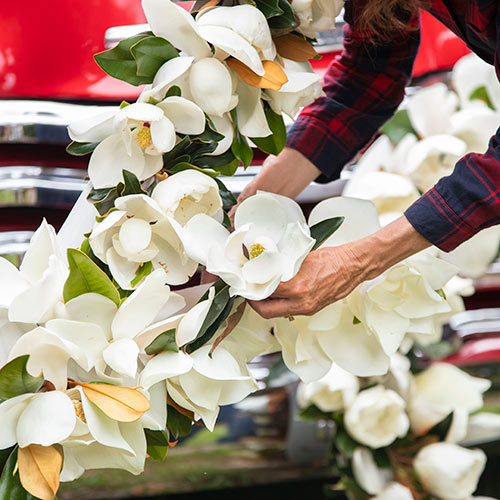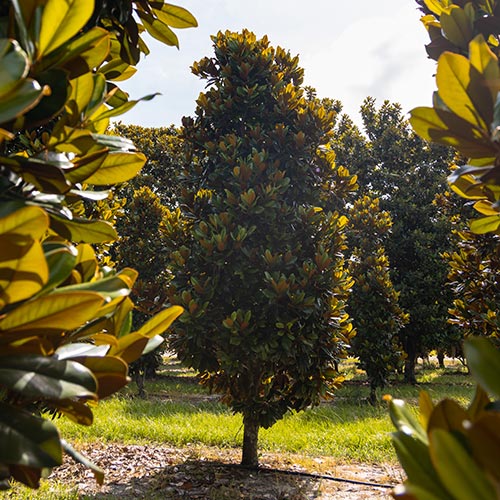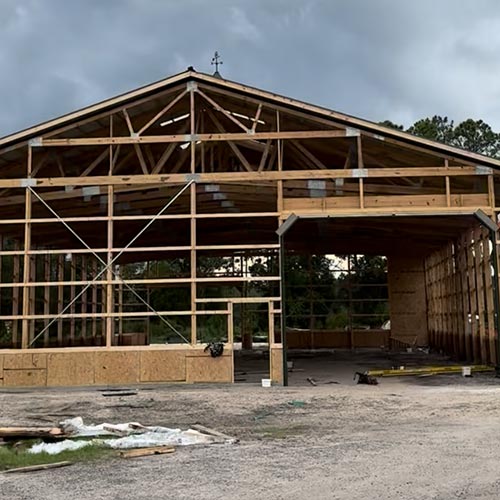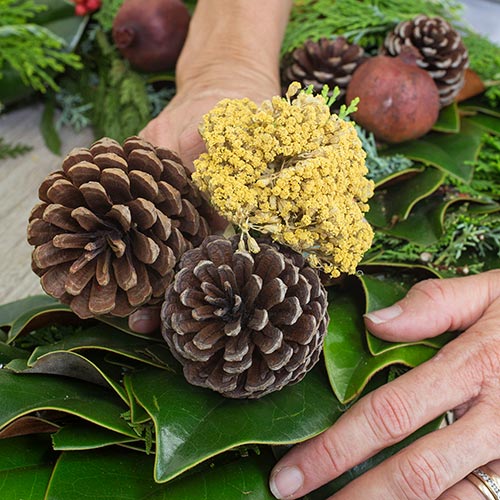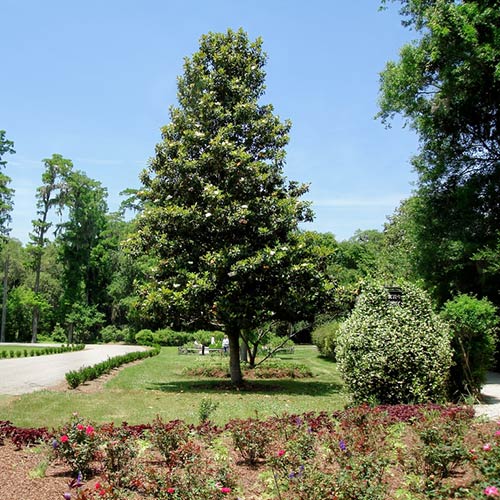7 Pro-Tips to Transplanting & Root Pruning Your Southern Magnolia Tree: A Complete Guide
August 15th, 2024
We cherish our Southern Magnolias for their stunning flowers and majestic foliage, making them a prized addition to any garden or landscape. However, there are times when you may need to relocate your magnolia tree to a new spot in your yard or garden.
Every expert grower at The Magnolia Company knows proper transplanting techniques are crucial to ensure the tree’s health and survival. Combined with root pruning, which plays a significant role in facilitating successful transplantation, we’re here to make sure your magnolia has a smooth transition into its new location.
In this guide, we’ll walk you through the process of transplanting a magnolia tree and performing root pruning, step by step.
Understanding Southern Magnolias
Magnolia trees are renowned for their large, fragrant flowers and glossy green foliage. Before embarking on a transplanting project, it’s essential to understand the specific characteristics of magnolia trees and the factors that can influence their successful relocation.
The tree’s size, age, seasonality, and soil conditions will all impact the transplanting process. If you have to move your tree, try to do it while the tree is still fairly young, with a trunk diameter of less than 4 inches. To give you an idea, a 4 inch diameter tree would be about 5 years planted in your soil. Young trees, like kids with scraped knees, recover faster than mature trees.
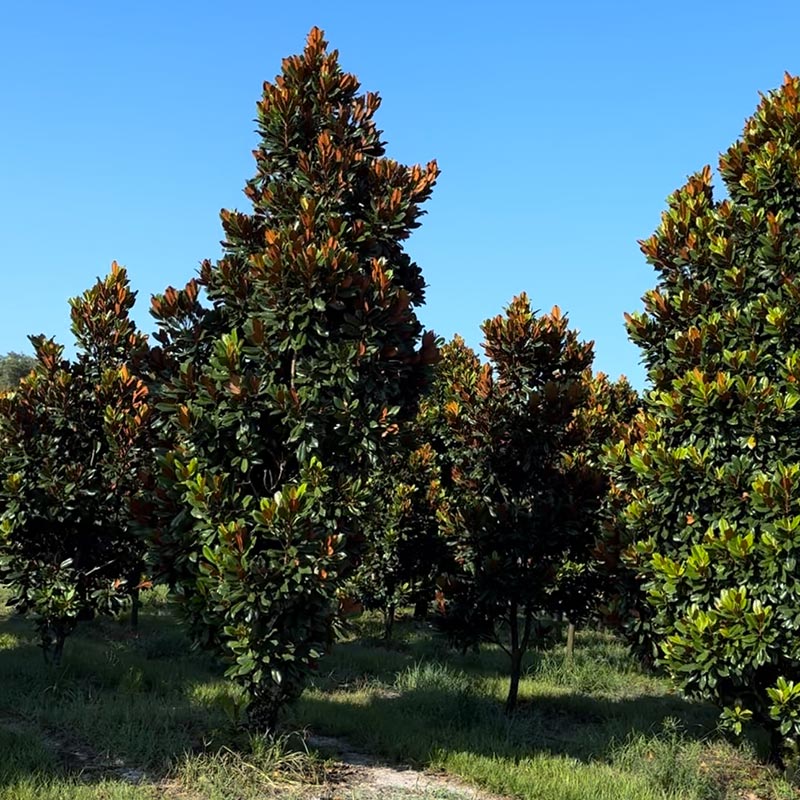
Setting Up for Success
To prepare your magnolia tree for relocation, start by selecting a suitable location in your yard or garden. Choose a spot that receives adequate sunlight and has well-draining soil. If you live in a colder place, make sure your spot is relatively sheltered from harsh winds during the winter, like a side yard. Choosing a new hole is just like choosing a new home. A few things to consider when choosing a new home for your magnolia tree.
SUNLIGHT: 6-8 hours per day
FULL SUN: Is the best.
DRAINAGE: Good drainage is needed
WATER: Access to water is good
SAFETY: Stay 20 feet away from homes or power lines.
Timing is also critical. We recommend moving your tree in winter through early spring, while the tree is dormant. Just like people, plants can get stressed. This is our main concern, so we like to transplant our magnolias in the cool months.
As with every project, having the right tools for the job makes all the difference. A shovel, pruning shears, a wheelbarrow, a root pruning tool, and a spare set of hands (like a friend or fellow gardening enthusiast) will most certainly come in handy.
We also recommend having some fertilizer (slow release), root growth stimulant (humic acid – found on Amazon), and mulch in your tool kit. They’re not must-haves, but imagine how you’d feel after a day of moving into a new home. You’ll probably want a good meal, because moving is an exhaustive process. Your tree is the same – creature comforts really go a long way towards helping your tree “settle in” to its new location.
Time to Move! – The Transplanting Process After Root Pruning
The transplanting process begins by carefully digging up the magnolia tree, taking care to minimize root damage and creating a root ball that will support the tree during transport.
Remember where your original root pruning radius is located. Dig 1½ inches beyond the original root radius. Depending on the size of your tree, you’ll want to aim between 6-10 inches away from the trunk. The goal is to preserve the root ball, but sever any straggling roots. Dig strategically, severing roots with clean strokes of your shovel.
Once you’ve created your perimeter, start working your shovel under the tree. At first, go deeper than you think you should. You can’t instantly or easily reattach roots, but you can always put dirt back in the hole. Lift the tree out of the ground gently.
Once the tree is out of the ground, move it to its new location with caution, ensuring proper support to prevent damage to the branches and roots (this is where your friend comes in handy). Place the tree in the new hole, backfilling the hole with soil and watering thoroughly to help settle the roots.
It Starts at the Roots-Before You Dig-Root Pruning and Your New Location
To properly relocate a magnolia tree, you should root prune your tree prior to moving. Plan 60 Days ahead of your relocation date and mark a perimeter around the root ball 6-7 inches away from the trunk. Use a sharp shovel and dig down around the perimeter 14 inches deep. Complete ½ of the perimeter on Day 1 and then 20 days later complete the 2nd half again 14” deep. Wait another 20 days to dig your tree. In these 60 days drench the top of the soil with your humic acid solution you purchased on Amazon. (the humic acid is not mandatory, but is recommended)
Post-Transplant Care
After transplanting and root pruning, it’s important to provide proper care to help the magnolia tree establish itself in its new location.
Consistency is key: Maintain a regular watering regimen, ensuring that the soil around the tree remains consistently moist but not waterlogged. As an added method of support, apply a layer of mulch around the base of the tree to conserve moisture and suppress weed growth. Keep an eye on the tree for signs of stress or disease, and fertilize as needed to promote healthy growth.
Parting Thoughts
Transplanting a magnolia tree can be a daunting task, especially if it’s your first time. By following the steps outlined in our guide and practicing proper root pruning techniques, you’re set up for a successful transplant. So roll up your sleeves, gather your tools, grab a friend, and get ready to give your magnolia tree a fresh start in its new home!
As always, we’re here to answer any questions you have! You can reach us via phone, email, or even our Instagram and Facebook pages! Rain or shine, we’re here to help you grow your green thumb!
Recent Articles



